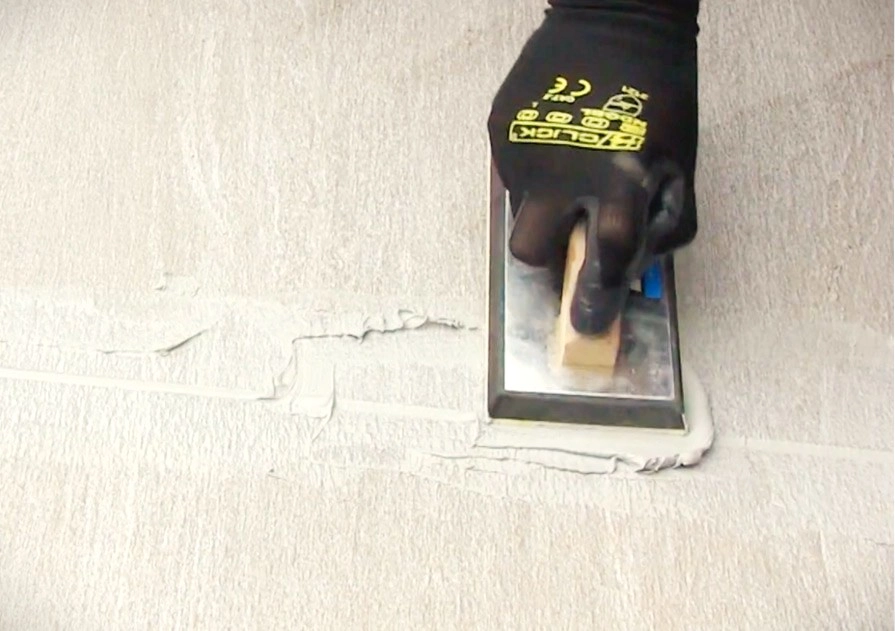Not Enough Grout Between Tiles?

Grout has been a love-hate relationship for tile installers for years. Any tile installation project gains strength from this product.
The best aspect is that it improves the tile quality while also preventing debris from getting between tiles. Grout installation is time-consuming and exhausting, though.
In addition, there are other issues with the installation procedure, like insufficient grout between tiles.
I’ve included the reasons why there isn’t enough grout between tiles below, regardless of whether you installed the tiles yourself or had someone else do it for you.
I’ll also go over how to fix this issue and prevent it from happening again.
How Do You Know When There Is Insufficient Grout Between Tiles?
Insufficient grout between tiles can be identified in two ways.
Examining the grout joints is the first and most visible method. The amount of grout poured was insufficient if the joints are so deep below the tile surface that you can see the tile edges.
Walking barefoot on the tiles and touching the grout joints is the alternative technique. There is probably not enough grout between the tiles if you get pain when you walk on a tiled floor.
Even if you are not a professional tiler, it is rather easy to diagnose inadequate grout lines.
Why Is the Grout Between Tiles Insufficient?
This issue is known as low grout lines in the professional tiling business. There could be insufficient grout between tiles for a number of reasons. Among these are the following:
- Not using enough grout between the joints: If you’re rushing to grout your tiles, you can accidentally use too little grout. This would definitely result in insufficient grout between tiles.
- Adding a lot of water to the grout mixture can also result in low grout lines because the water evaporates as the grout dries, leaving a lot of space between the joints.
- Overscrubbing the grout joints with water and a sponge after installation: You risk unintentionally removing some grout from the joints when you try to clean your tiles after grout installation.
- Existence of cavities beneath the floor or tiles: Some grout may drop at the bottom of tile joints with holes or voids, creating a lot of space between tiles. To make up for the additional space created by holes between tiles, always use more grout.
How Do You Proceed If You See Inadequate Grout Between Tiles?
You don’t need to freak out or get a headache trying to find out where you went wrong if you’ve just realized there isn’t enough grout between tiles.
This problem has two primary solutions. I’ll discuss both strategies, which work well in different contexts.
Here’s how to fix it if, a day or two after installation, you discover that there is not enough grout between the tiles.
Grout must be cleaned to get rid of contaminants and grime that could compromise adhesion. Then, before applying fresh grout, you ought to rewet the old grout. Fresh grout bonds more readily when it is moist than when it is dried.
Please be aware that only freshly laid grout is suitable for the aforementioned technique. The aforementioned technique won’t work if low grout lines are visible weeks after installation.
The alternative technique, which is strongly advised for dry grout, involves using a reciprocating saw with a carbide-grit blade as a grout removal instrument.
In order to avoid making any of the aforementioned blunders, you should use this strong tool to remove all of the grout from your tile joints and apply a new layer.
Does the Tiling Industry Accept Inadequate Grout Between Tiles?
It is actually against the standards and regulations of the tiling industry when there is insufficient grout between tiles. According to these rules, grout must sufficiently fill in the spaces between tiles. You will be violating the advised practices if it is too low.
In addition to not being up to date, this kind of arrangement can drastically detract from the attractiveness of your wall or floor. You should utilize enough grout between your tile joints for your own benefit.
When Grout Runs Out, What Should You Do?
Running out of building supplies is a common occurrence for everyone. You can always pause at a certain location and arrange for additional grout if you run out.
Before stopping at a specific location, it is assumed that you were filling the joints sufficiently. On the other hand, it is inappropriate to spread grout with low joints all over the floor.
When using grout, a good tip is to always fill the joints completely, even if you are only using a small amount of product. Running out of grout and having low grout joints is preferable to running out of grout and leaving some areas of your tiled wall or floor uncovered.
What Negative Effects Can Insufficient Grout Between Tiles Cause?
You might think you can get by with less grout between tiles. Conversely, there are numerous drawbacks to having such a configuration;
- Poor grout between tiles gives your wall or floor a terrible appearance. Can you picture the appearance of tiles with their edges and ends sticking out? Your tiles would appear amateurish as a result.
- The gaps can draw dust and debris: Because your tiles have low grout joints, dirt and debris will be more likely to collect there. Your joints will eventually look unclean and detract from the tile finish.
- Because tiles are prone to movement, they will chip quickly. When that occurs, the joints will crack and chip more readily if there is no grout between them. Therefore, you will always need to replace cracked tiles if you apply insufficient grout between them.
Do Tile Surfaces and Grout Need to Be Level?
You must know what enough means when we discuss low grout joints. The tile surface and the grout shouldn’t be level. It should, nevertheless, be high enough to cover your tiles’ edges.
If you can insert several inches of your finger or nail into the junction, grout is deemed inadequate. As previously said, there is a good likelihood that the grout is too low if walking barefoot on your tiles hurts.
Depending on the joint’s breadth, the grout should not have a depression greater than 1 to 6 mm after installation and curing if you want a precise measurement.
If tiles don’t have enough grout, is it wise to add more?
The majority of do-it-yourself tile installers typically think of this initially. It’s not always the greatest strategy, though. Even though this issue seems straightforward, working with grout as a building material can be a little challenging.
It gets harder to bond a new coat of grout once it has dried. Therefore, there won’t be any adhesion when new grout is added to old grout. Additionally, the surface grout will ultimately chip or wash away.
When you realize there isn’t enough grout, there are just two situations in which you can add more. The first is after the grout was put in a few days prior. You can rewet the grout and add more if it’s still fresh.
The other exception occurs when there is more than 1/8 inch of space between the tiles. You can clean the joints, apply extra grout, and allow it to cure if the current grout is too low.
Make sure your project satisfies the aforementioned requirements before applying more grout to your tiles. Otherwise, get a grout removal tool, scrape out all the dried grout, and apply a new coat.

